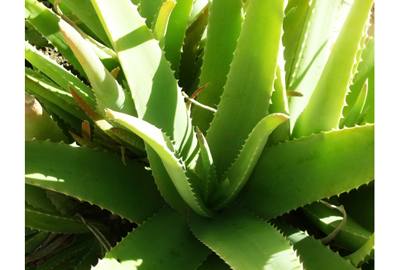 By TreeLiving
By TreeLiving
To conserve water, some gardeners are turning to low water-use or drought-tolerant plants. There are many environmental benefits to this approach to gardening that combines water conservation with beautiful landscaping. Let's take a look at what is meant by low water-use plants, what kinds of plants there are in this category, and the specific benefits.
What Exactly Are Low Water-Use Plants?
These are plants that have adapted to low-water conditions. They have the ability to store water in their leaves, or have narrow leaves that reduce the loss of water. Cacti are probably the best-known low-water plant, but they are not the only ones by any means. Some low water-use plants can grow in humid air as long as the soil moisture is low.
What Kinds of Plants Are Low Water-Use?
In general, plants with hairy, succulent, or narrow leaves tend to be low water-use. Some evergreens fall into this category, too, such as junipers and hemlocks. If you live in a drought-prone area, you will find native plants to be a good choice. They have already adapted to the low-moisture conditions.
Here are some of the types of plants gardeners use in low-water gardens. Consider your location when you look at this list, and see if there are any species that are native to your region. Also make sure that none of these are listed among the invasive plants for your area.
* Serviceberry (Amelanchier alnifolia)
* Thyme (Thymus vulgaris)
* Rocky Mountain Juniper (Juniperus scopulorum)
* Hen-and-chicks (Sempervivum tectorum)
* Fairy Duster (Calliandra eriophylla)
* Four-wing saltbush (Atriplex canescens)
* Pale purple coneflower (Echinacea pallida) (The other Echinacea species are also low water-use)
* Dianthus
* Compass plant (Silphium laciniatum)
* Aromatic sumac (Rhus aromatica)
* Tall blasing star (Liatris aspera)
* Aromatic aster (Aster oblongifolius) (Most species of aster are low water-use)
* Beach plum (Prunus serotina)
* Aloe (Aloe vera)
* Lavender (Lavandula angustifolia)
Environmental Benefits
# Native plants are generally considered best for low-water landscaping. Planting natives is much better for the environment, supporting the local ecosystem and habitat and not introducing potentially invasive species.
# Conserving water, of course, is a significant environmental benefit of low water-use plants. Watering lawns and gardens can use a tremendous amount of water.
# Drought-resistant plants, especially native ones, are not as prone to pests and diseases as other species. This cuts down on the use of pesticides and fungicides, which is very beneficial for the environment.
# Many weeds require moist soil. Your drier garden soil will not be as attractive to weeds, cutting back on chemical weed-killers and gas-powered mowers and trimmers.

